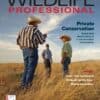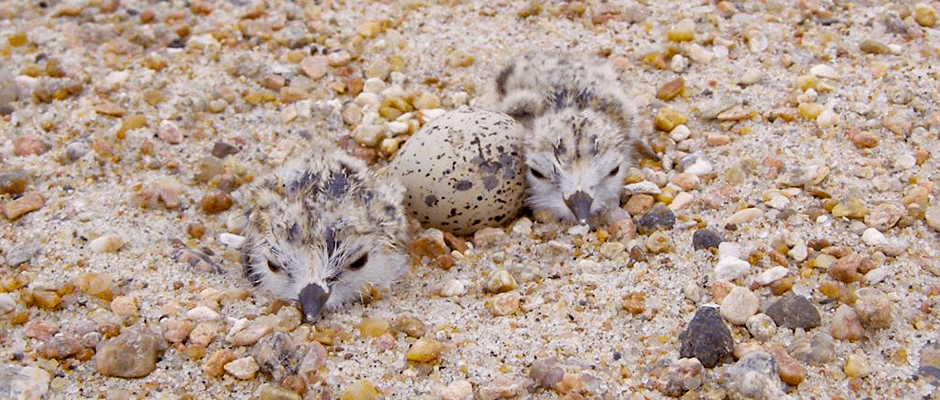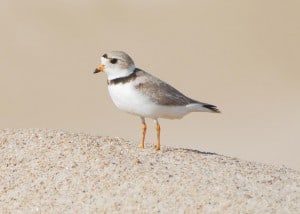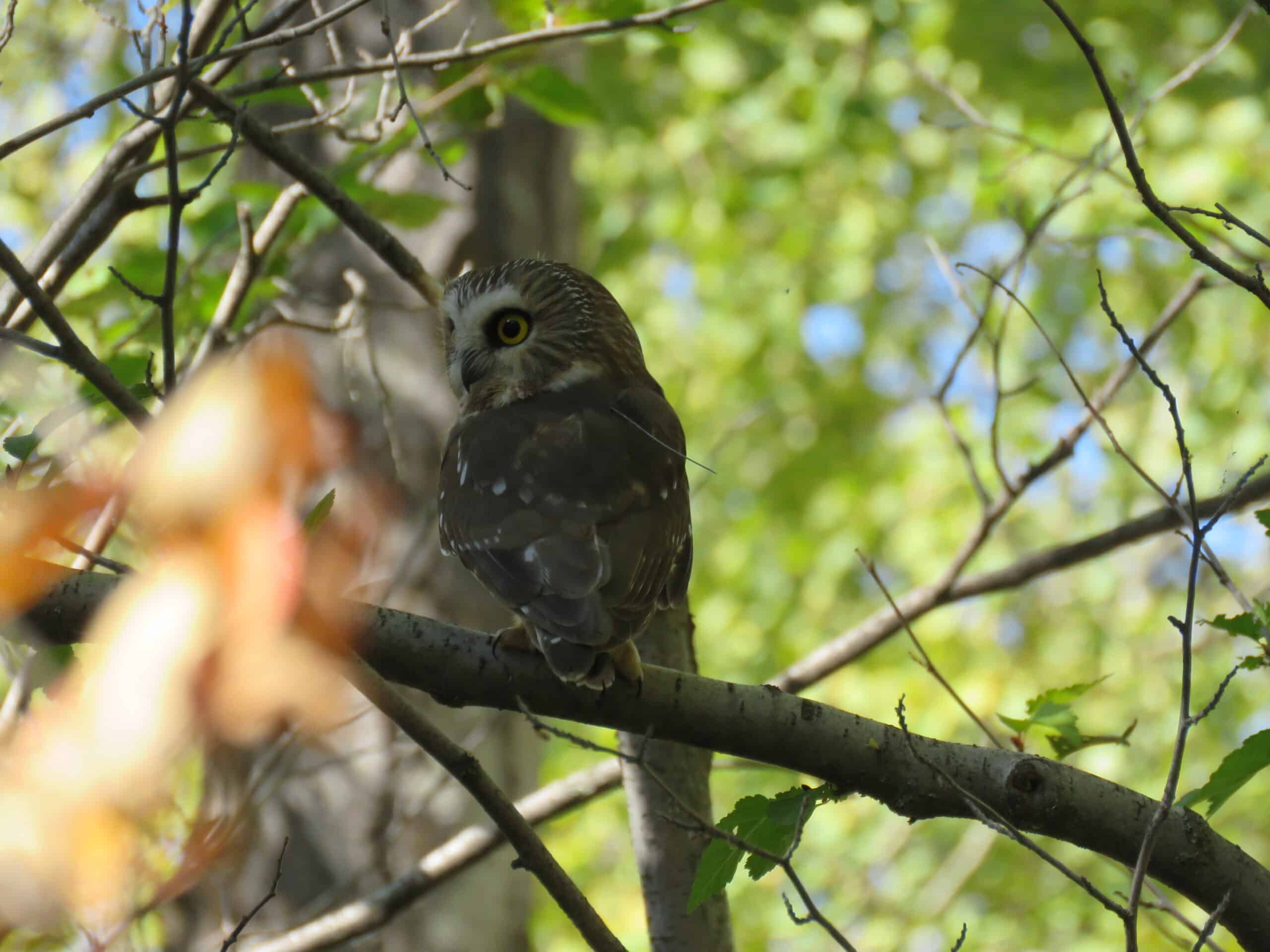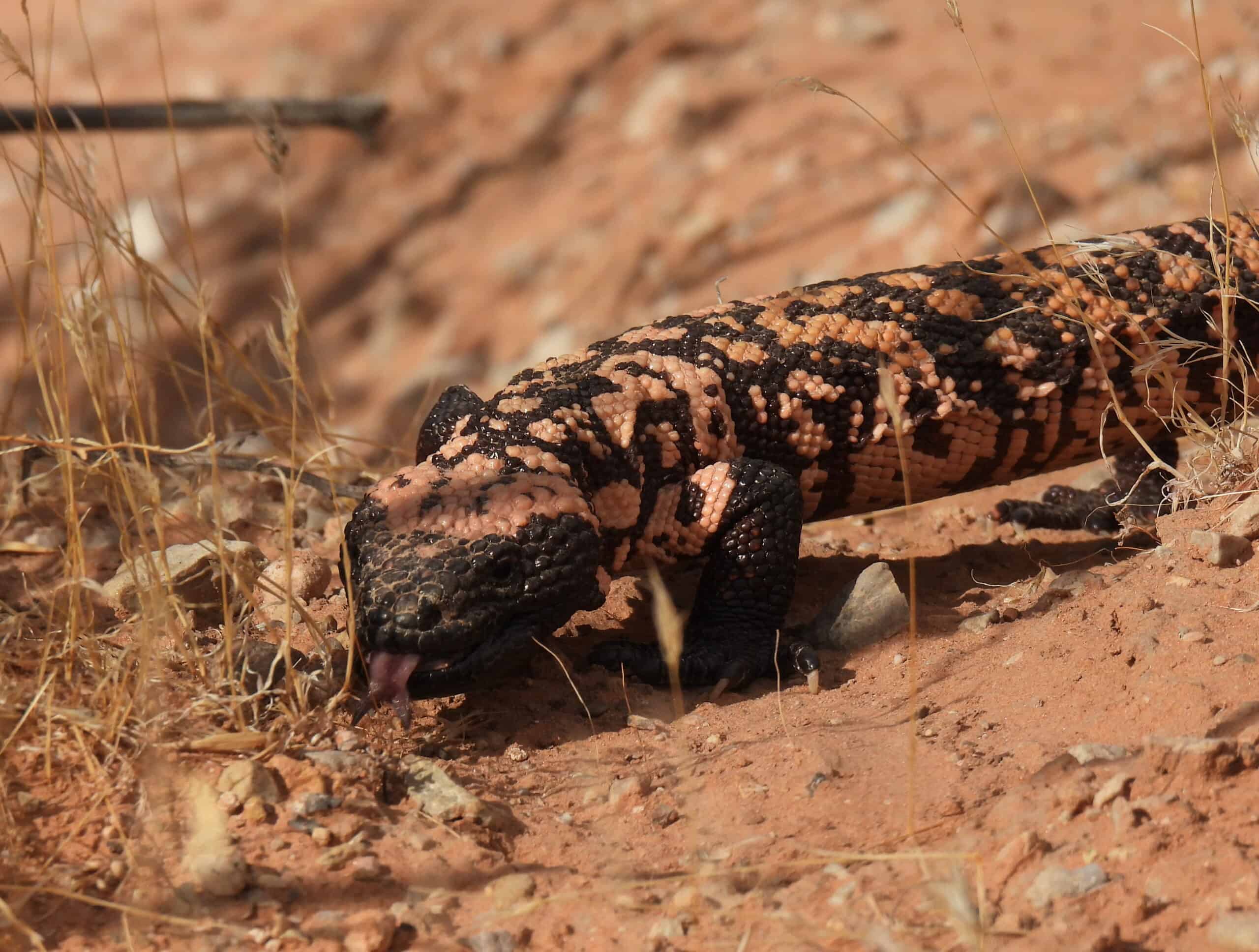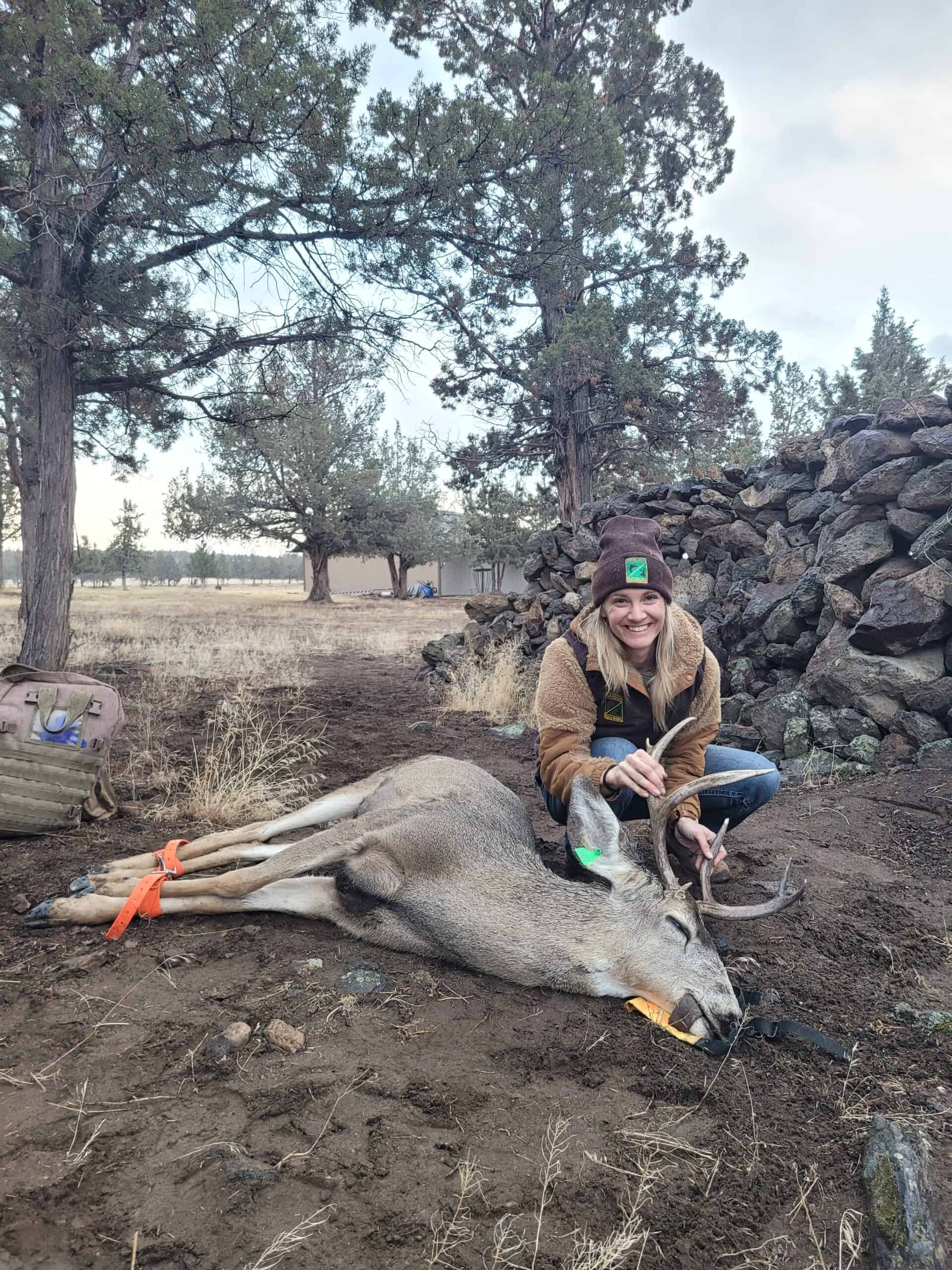Share this article
Piping Plovers May Not Benefit From Watershed Drainage
Draining watersheds may not be helping federally threatened plovers, according to new research.
“We could be continually making it harder for them to maintain and grow their population because there’s less suitable habitat for them to grow on,” said Lisa McCauley of the Northern Great Plains population of piping plovers (Charadrius melodus), which is listed as threatened under the federal Endangered Species Act. McCauley conducted the study recently published in the Journal of Fish and Wildlife Management during post-doctoral work at South Dakota State University.
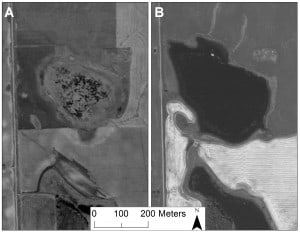
A wetland in eastern North Dakota. The left image shoes pre-drainage while the right shows post-drainage. Image Credit: McCauley et al
In North Dakota, these birds generally prefer to nest along the bare shores of water, sometimes in the so-called Prairie Pothole region in the east of the state, an ecosystem traditionally characterized by a number of seasonal and permanent ponds and lakes.
But by examining aerial photos of the region and piping plover survey data from 1979 to 2011, McCauley and others have found that watersheds that feed lakes have been drained over the years by farmers and agricultural companies. While the amount of water overall may be the same, the water is now consolidated into larger bodies that can be more easily exploited for irrigation.
“These wetlands progressively get wetter and wetter over time,” McCauley said.
The effect, overall, means there are less suitable shorelines for the plovers. “The wetlands that don’t have plovers nesting on them anymore are now larger and more of their [upland] watershed has been drained,” she said. “Because [the wetlands] are so full now, there’s no shoreline left for [the plovers] to nest in.”
The study found that the plovers had a 99.6 percent greater chance of turning up in undrained watersheds compared to areas that had 10 percent of their water drained.
While piping plovers’ main habitat in the area is along the Missouri River and its reservoirs, the birds often turn to the Prairie Pothole watershed system when the river floods or becomes otherwise unsuitable for nesting.
“It’s probably reduced their range in that region,” McCauely said of the watershed draining practice.
She said the implications of the findings mean that ecosystem managers may need to look at the bigger picture of habitat conservation.
“Modifying the areas around the wetlands can affect the wetlands themselves,” she said. “We may need to be thinking of wetland conservation from a watershed perspective.”
Header Image: Piping plover chicks. Image Credit: Susan Haig, USGS

